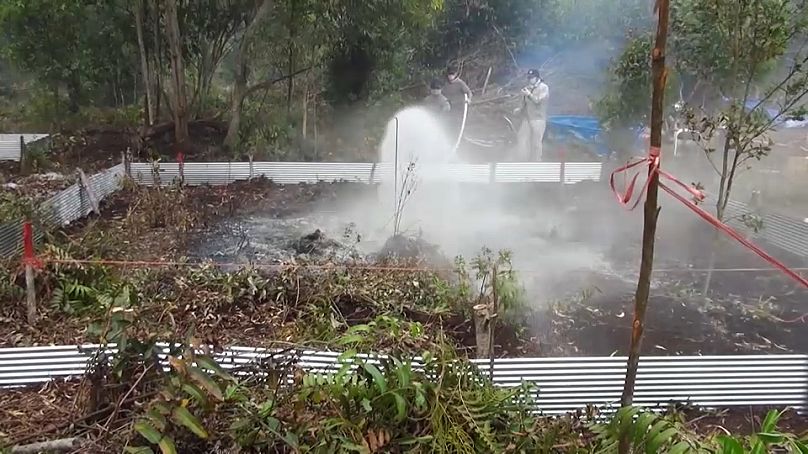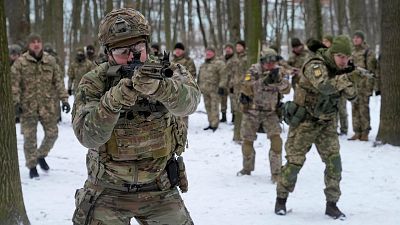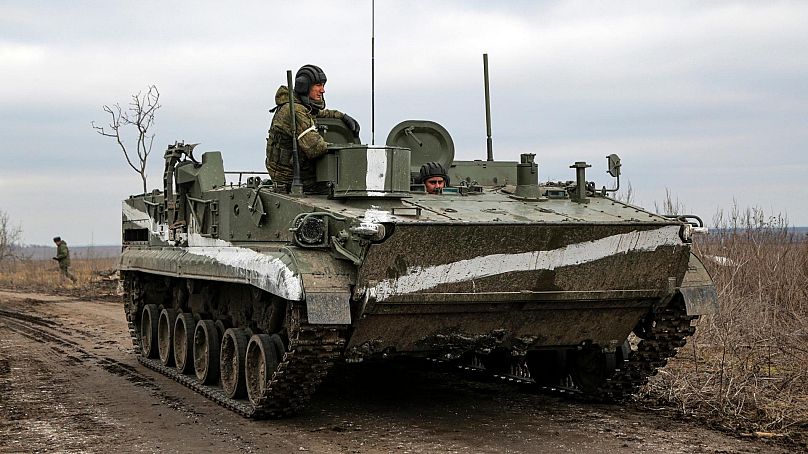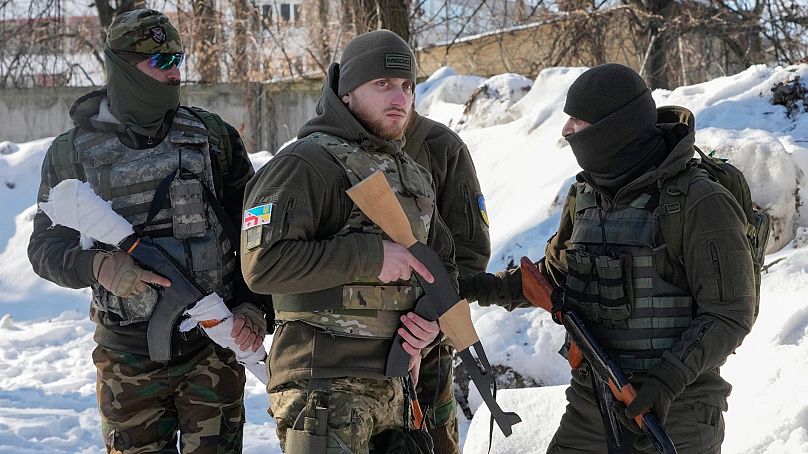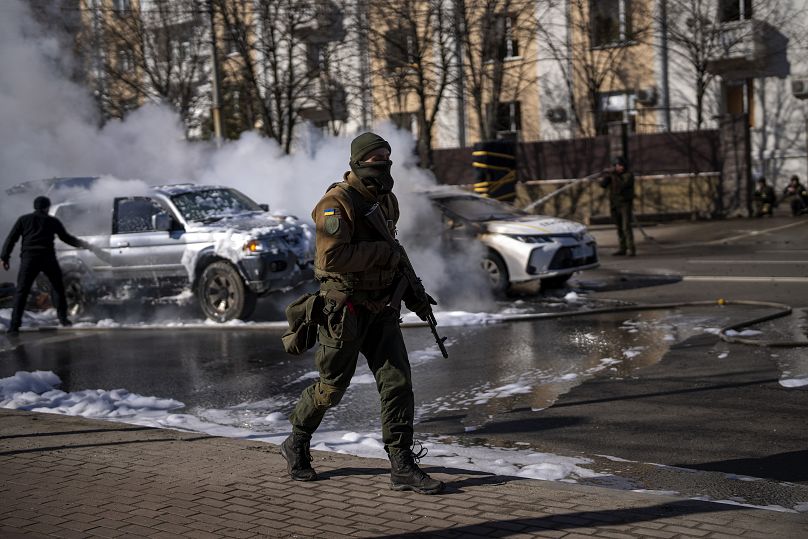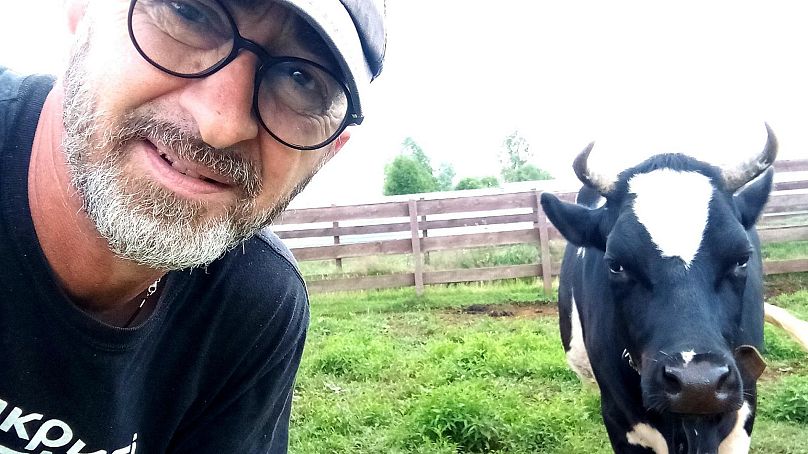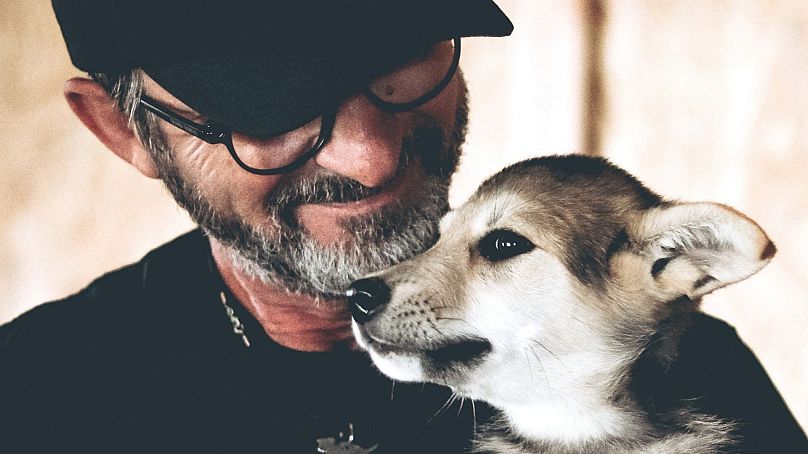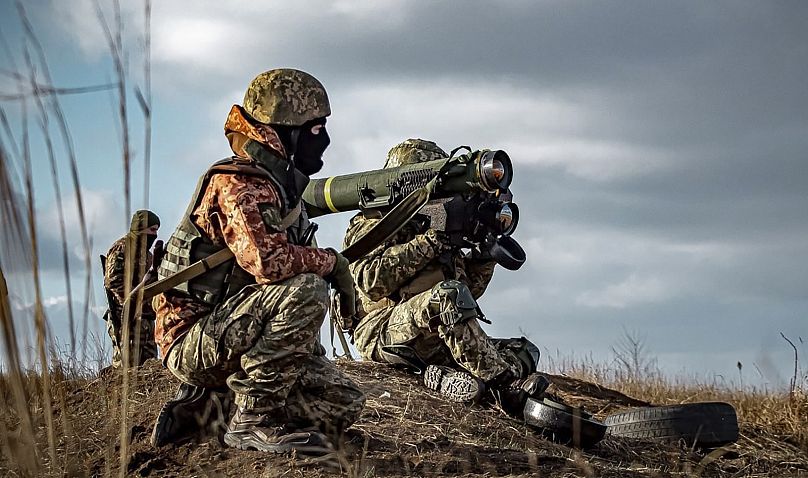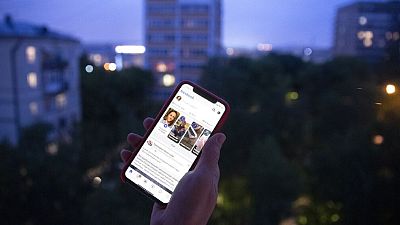
File - A user holds a smartphone with an opened Facebook page in Moscow, Russia, June 10, 2021. -
Copyright Pavel Golovkin/Copyright 2021 The Associated Press. All rights reserved.
By Euronews with Reuters • Updated: 28/02/2022 -
Russia is ramping up efforts to control the narrative over its invasion of Ukraine online and over the airwaves. Tech giants, however, are fighting back.
Facebook's owner Meta and Alphabet Inc's Google have both put restrictions on Russia's state-controlled media outlets in Ukraine and around the world.
On Friday, Russia said it would partially restrict Facebook, a move Meta said came after it refused a government request to stop the independent fact-checking of several Russian state media outlets.
By Saturday, Twitter also said its service was being restricted for some Russian users.
Ukraine war: Meta restricts Russia from running Facebook ads amid row over media censorship
The Disinformation War: The falsehoods about the Ukraine invasion and how to stop them spreading
Images and videos were slower to load on Facebook after the move was announced, according to users, while Facebook Messenger had long periods of not loading at all.
On mobile devices, Twitter remained slow - it has been the subject of a punitive slowdown since March. Many state websites, including the Kremlin site kremlin.ru, have also suffered outages in recent days.
The stand-off is the latest step in an ongoing confrontation with Moscow where tech platforms risk government-imposed restrictions, as Russia seeks to censor dissidents while bolstering state-run media.
Facebook to TikTok: Media platforms under pressure
Major social, video, and live-streaming platforms from Facebook to TikTok and Twitch are coming under growing pressure to combat online falsehoods relating to the conflict, including the spread of misleading footage.
On Monday, Russia ordered Google to immediately restrict access to information posted as part of Google Ads that it said contained inaccurate information about casualties sustained by Russian forces and Ukrainian civilians.
State communications regulator Roskomnadzor said it had sent a letter to Google demanding that the offending materials be removed and said it would block internet resources that publish such information.
Ukraine’s tech sector is a 'pillar of resistance'. Here’s how it's responding to Russia’s invasion
Russia’s pavillion has been banned at MWC 2022. Here is what to expect from the 'unifying event'
The escalation of Russia's clash with big tech comes days before a deadline Moscow set for major foreign tech companies to comply with a new law that requires them to set up official representation in the country, which could make it easier for the Kremlin to regulate platforms.
It follows a series of fines and slowdowns imposed on platforms that the Russian government said failed to remove illegal content.
Ahead of the March deadline, an online list by Russia's communications regulator Roskomnadzor showed only Apple, Spotify and Viber had fulfilled all three requirements of the law as of 9.45 pm GMT on Sunday. These are: registering an account with the regulator, giving users a way to communicate directly with the company, and setting up a representative office.
Advertising bans, slowdowns and shutdowns
This month, Russia threatened the companies with an advertising ban if they do not comply. Harsher restrictions that could follow include speed slowdowns or outright blocks, Russian officials have said.
Tech giants are being placed in a difficult position as the conflict in Ukraine fuels an information war.
Companies indeed face the burden of weighing demands from Ukrainian officials and sympathisers worldwide, who have called on them to expel Russian users from their services to stop the spread of false information, while also preserving the access of dissidents to vital digital tools.
"Mark Zuckerberg, while you create Metaverse - Russia ruins real life in Ukraine! We ask you to ban access to @facebookapp and @instagram from Russia - as long as tanks and missiles attack our kindergartens and hospitals!" Ukrainian vice prime minister Mykhailo Fedorov wrote on Twitter on Sunday.
Responding to the demands, Meta's Head of Global Affairs Nick Clegg tweeted on Sunday that turning off Facebook and Instagram in Russia would "silence important expression at a crucial time".
It was clear others across the tech landscape were grappling with similar dilemmas.
Just minutes after saying in a post on Sunday that the Telegram messaging app would consider restricting some channels for spreading false information, founder Pavel Durov said the company would no longer do so after receiving feedback from users.
Russia's state-run media under scrutiny
The activities of state-controlled media such as RT and Sputnik - which were hit with new EU sanctions on Sunday - has been a key source of conflict between Moscow and major tech platforms, as activists and politicians demanded the companies demonetise or ban the Kremlin-sponsored outlets.
Roskomnadzor has warned local media not to circulate what it called "false information" about Moscow's military operation, banning the use of the words "invasion" and "assault" to describe its attack on Ukraine.
Russian tech giant Yandex has also started warning Russian users looking for news about Ukraine on its search engine about unreliable information on the internet.
Russia calls its actions a "special operation" that it says is not designed to occupy territory but to destroy Ukraine's military capabilities and capture individuals who it sees as dangerous nationalists - something the government in Kyiv and Western powers say is baseless propaganda.
Kremlin critic Alexei Navalny slams 'cowardly' Google and Apple for removing election app
Russia hits tech giants Google and Meta with massive fines
Amid Russia's invasion, Facebook, Twitter, Google, and its video streaming service YouTube have all taken new measures to restrict Russian state media from making money from ads on their sites.
Twitter, which banned ads from state-backed media in 2019, said it was pausing all ads in Russia and Ukraine to ensure the visibility of public safety information. Google, the world's biggest ad seller, also said it was not allowing Russian state media to sell ads using its tools.
Facebook and Google also said they had restricted access to some state media accounts in Ukraine at the request of the Ukrainian government. Google said on Sunday it had banned downloads of RT's mobile app in Ukraine in response to a government legal request.
By Euronews with Reuters • Updated: 28/02/2022 -
Russia is ramping up efforts to control the narrative over its invasion of Ukraine online and over the airwaves. Tech giants, however, are fighting back.
Facebook's owner Meta and Alphabet Inc's Google have both put restrictions on Russia's state-controlled media outlets in Ukraine and around the world.
On Friday, Russia said it would partially restrict Facebook, a move Meta said came after it refused a government request to stop the independent fact-checking of several Russian state media outlets.
By Saturday, Twitter also said its service was being restricted for some Russian users.
Ukraine war: Meta restricts Russia from running Facebook ads amid row over media censorship
The Disinformation War: The falsehoods about the Ukraine invasion and how to stop them spreading
Images and videos were slower to load on Facebook after the move was announced, according to users, while Facebook Messenger had long periods of not loading at all.
On mobile devices, Twitter remained slow - it has been the subject of a punitive slowdown since March. Many state websites, including the Kremlin site kremlin.ru, have also suffered outages in recent days.
The stand-off is the latest step in an ongoing confrontation with Moscow where tech platforms risk government-imposed restrictions, as Russia seeks to censor dissidents while bolstering state-run media.
Facebook to TikTok: Media platforms under pressure
Major social, video, and live-streaming platforms from Facebook to TikTok and Twitch are coming under growing pressure to combat online falsehoods relating to the conflict, including the spread of misleading footage.
On Monday, Russia ordered Google to immediately restrict access to information posted as part of Google Ads that it said contained inaccurate information about casualties sustained by Russian forces and Ukrainian civilians.
State communications regulator Roskomnadzor said it had sent a letter to Google demanding that the offending materials be removed and said it would block internet resources that publish such information.
Ukraine’s tech sector is a 'pillar of resistance'. Here’s how it's responding to Russia’s invasion
Russia’s pavillion has been banned at MWC 2022. Here is what to expect from the 'unifying event'
The escalation of Russia's clash with big tech comes days before a deadline Moscow set for major foreign tech companies to comply with a new law that requires them to set up official representation in the country, which could make it easier for the Kremlin to regulate platforms.
It follows a series of fines and slowdowns imposed on platforms that the Russian government said failed to remove illegal content.
Ahead of the March deadline, an online list by Russia's communications regulator Roskomnadzor showed only Apple, Spotify and Viber had fulfilled all three requirements of the law as of 9.45 pm GMT on Sunday. These are: registering an account with the regulator, giving users a way to communicate directly with the company, and setting up a representative office.
Advertising bans, slowdowns and shutdowns
This month, Russia threatened the companies with an advertising ban if they do not comply. Harsher restrictions that could follow include speed slowdowns or outright blocks, Russian officials have said.
Tech giants are being placed in a difficult position as the conflict in Ukraine fuels an information war.
Companies indeed face the burden of weighing demands from Ukrainian officials and sympathisers worldwide, who have called on them to expel Russian users from their services to stop the spread of false information, while also preserving the access of dissidents to vital digital tools.
"Mark Zuckerberg, while you create Metaverse - Russia ruins real life in Ukraine! We ask you to ban access to @facebookapp and @instagram from Russia - as long as tanks and missiles attack our kindergartens and hospitals!" Ukrainian vice prime minister Mykhailo Fedorov wrote on Twitter on Sunday.
Responding to the demands, Meta's Head of Global Affairs Nick Clegg tweeted on Sunday that turning off Facebook and Instagram in Russia would "silence important expression at a crucial time".
It was clear others across the tech landscape were grappling with similar dilemmas.
Just minutes after saying in a post on Sunday that the Telegram messaging app would consider restricting some channels for spreading false information, founder Pavel Durov said the company would no longer do so after receiving feedback from users.
Russia's state-run media under scrutiny
The activities of state-controlled media such as RT and Sputnik - which were hit with new EU sanctions on Sunday - has been a key source of conflict between Moscow and major tech platforms, as activists and politicians demanded the companies demonetise or ban the Kremlin-sponsored outlets.
Roskomnadzor has warned local media not to circulate what it called "false information" about Moscow's military operation, banning the use of the words "invasion" and "assault" to describe its attack on Ukraine.
Russian tech giant Yandex has also started warning Russian users looking for news about Ukraine on its search engine about unreliable information on the internet.
Russia calls its actions a "special operation" that it says is not designed to occupy territory but to destroy Ukraine's military capabilities and capture individuals who it sees as dangerous nationalists - something the government in Kyiv and Western powers say is baseless propaganda.
Kremlin critic Alexei Navalny slams 'cowardly' Google and Apple for removing election app
Russia hits tech giants Google and Meta with massive fines
Amid Russia's invasion, Facebook, Twitter, Google, and its video streaming service YouTube have all taken new measures to restrict Russian state media from making money from ads on their sites.
Twitter, which banned ads from state-backed media in 2019, said it was pausing all ads in Russia and Ukraine to ensure the visibility of public safety information. Google, the world's biggest ad seller, also said it was not allowing Russian state media to sell ads using its tools.
Facebook and Google also said they had restricted access to some state media accounts in Ukraine at the request of the Ukrainian government. Google said on Sunday it had banned downloads of RT's mobile app in Ukraine in response to a government legal request.
Ukraine war: What part is hackers’ collective Anonymous playing in the war effort against Russia?
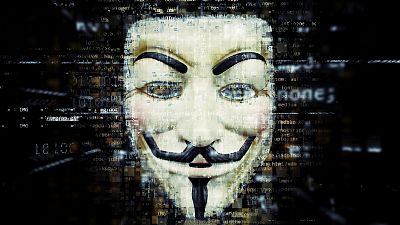
Anonymous has claimed cyber attacks on Russian media and state websites in retaliation for the country's invasion of Ukraine - Copyright Pixabay
By Natalie Huet with AFP and Reuters • Updated: 28/02/2022 -
They’re mysterious, they’re disruptive, and they’ve picked their side in the war pitting Russia against Ukraine.
The hacker collective Anonymous has claimed credit for several cyberattacks that took down Russian government websites and state-backed news outlets in recent days.
On Monday, several prominent Russian media services appeared to have been hit simultaneously, including the state-run news agencies TASS and RIA Novosti and the newspaper Kommersant.
Their homepages temporarily displayed a message opposing Russia’s invasion of Ukraine, news agency AFP reported.
"Dear citizens. We urge you to stop this madness, don’t send your sons and husbands to certain death. Putin makes us lie and puts us in danger," the message written in Russian said.
"We have been isolated from the whole world, oil and gas are no longer traded. In a few years, we will be living like in North Korea," it added.
When Euronews Next attempted to access TASS’s website on Monday morning, a message appeared saying "an error occurred".
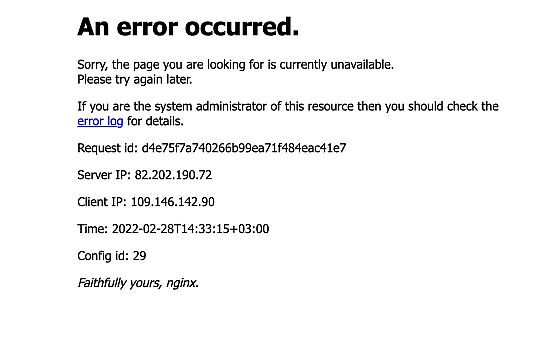 An error message on TASS’s website on Monday morning.Euronews
An error message on TASS’s website on Monday morning.Euronews
Euronews Next could not independently verify how many websites were affected by the purported attack, nor for how long.
War on Russia
On Thursday, hours after Russia invaded Ukraine, the hacker collective tweeted from an account linked to Anonymous, @YourAnonOne, that it was “officially in cyber war against the Russian government”.
Since then, the group claims it was behind several hacks including distributed denial of service (DDOS) attacks – where a site is paralysed because it’s bombarded with traffic – that brought down Russian government websites and that of RT, the country’s state-backed news service.
Ukrainian songs on Russian TV?
On Saturday, the websites of the Kremlin, the Duma - the lower house of the Russian parliament - and the Russian defence ministry were also down in an attack claimed by Anonymous on Twitter.
Anonymous also claimed on Sunday to have hacked Russian state TV channels, posting pro-Ukraine content including patriotic songs and images from the invasion. Euronews Next could not independently verify the claim.
"It's a fact some cyberattacks are carried out against Russia, but the extent of these attacks is difficult to gauge," Eric Schmitlin, cybersecurity consultant at Cendium Cyberdefense in Paris, told Euronews Next.
Attribution is also very tricky, he noted, especially in the case of the Anonymous collective, famous for the white Guy Fawkes masks donned by its mysterious members.
"Anonymous the group is actually not a group. It’s everyone and no one since anyone can claim to be part of Anonymous," Schmitlin said.
Ukraine war: Russians wait in queues for cash as rouble plunges and hyperinflation looms
Simple but disruptive attacks
Still, the Anonymous, which emerged at the beginning of the 2000s, have historically been vocal about defending free speech and privacy, Schmitlin noted, adding that their actions in cyberspace, while fairly simple, had the potential to be “very disruptive”.
"To defend an institution, a government, you need a lot of resources. But to attack a system you only need one or two skilled persons. Just a dozen people could have a big impact," he said.
A growing battalion of hackers is believed to be teaming up to fight Russia in cyberspace.
Ukraine’s vice prime minister Mykhailo Fedorov said on Saturday the country was setting up an "IT army" to counter Russia’s digital attacks.
"There will be tasks for everyone,” Fedorov said in a tweet that linked to a channel on the Telegram messaging app featuring a list of prominent Russian websites to target.

Anonymous has claimed cyber attacks on Russian media and state websites in retaliation for the country's invasion of Ukraine - Copyright Pixabay
By Natalie Huet with AFP and Reuters • Updated: 28/02/2022 -
They’re mysterious, they’re disruptive, and they’ve picked their side in the war pitting Russia against Ukraine.
The hacker collective Anonymous has claimed credit for several cyberattacks that took down Russian government websites and state-backed news outlets in recent days.
On Monday, several prominent Russian media services appeared to have been hit simultaneously, including the state-run news agencies TASS and RIA Novosti and the newspaper Kommersant.
Their homepages temporarily displayed a message opposing Russia’s invasion of Ukraine, news agency AFP reported.
"Dear citizens. We urge you to stop this madness, don’t send your sons and husbands to certain death. Putin makes us lie and puts us in danger," the message written in Russian said.
"We have been isolated from the whole world, oil and gas are no longer traded. In a few years, we will be living like in North Korea," it added.
When Euronews Next attempted to access TASS’s website on Monday morning, a message appeared saying "an error occurred".
 An error message on TASS’s website on Monday morning.Euronews
An error message on TASS’s website on Monday morning.EuronewsEuronews Next could not independently verify how many websites were affected by the purported attack, nor for how long.
War on Russia
On Thursday, hours after Russia invaded Ukraine, the hacker collective tweeted from an account linked to Anonymous, @YourAnonOne, that it was “officially in cyber war against the Russian government”.
Since then, the group claims it was behind several hacks including distributed denial of service (DDOS) attacks – where a site is paralysed because it’s bombarded with traffic – that brought down Russian government websites and that of RT, the country’s state-backed news service.
Ukrainian songs on Russian TV?
On Saturday, the websites of the Kremlin, the Duma - the lower house of the Russian parliament - and the Russian defence ministry were also down in an attack claimed by Anonymous on Twitter.
Anonymous also claimed on Sunday to have hacked Russian state TV channels, posting pro-Ukraine content including patriotic songs and images from the invasion. Euronews Next could not independently verify the claim.
"It's a fact some cyberattacks are carried out against Russia, but the extent of these attacks is difficult to gauge," Eric Schmitlin, cybersecurity consultant at Cendium Cyberdefense in Paris, told Euronews Next.
Attribution is also very tricky, he noted, especially in the case of the Anonymous collective, famous for the white Guy Fawkes masks donned by its mysterious members.
"Anonymous the group is actually not a group. It’s everyone and no one since anyone can claim to be part of Anonymous," Schmitlin said.
Ukraine war: Russians wait in queues for cash as rouble plunges and hyperinflation looms
Simple but disruptive attacks
Still, the Anonymous, which emerged at the beginning of the 2000s, have historically been vocal about defending free speech and privacy, Schmitlin noted, adding that their actions in cyberspace, while fairly simple, had the potential to be “very disruptive”.
"To defend an institution, a government, you need a lot of resources. But to attack a system you only need one or two skilled persons. Just a dozen people could have a big impact," he said.
A growing battalion of hackers is believed to be teaming up to fight Russia in cyberspace.
Ukraine’s vice prime minister Mykhailo Fedorov said on Saturday the country was setting up an "IT army" to counter Russia’s digital attacks.
"There will be tasks for everyone,” Fedorov said in a tweet that linked to a channel on the Telegram messaging app featuring a list of prominent Russian websites to target.
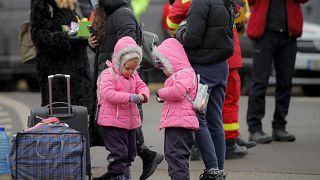


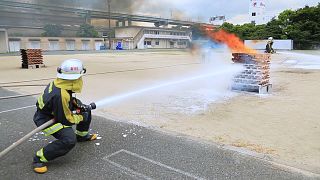
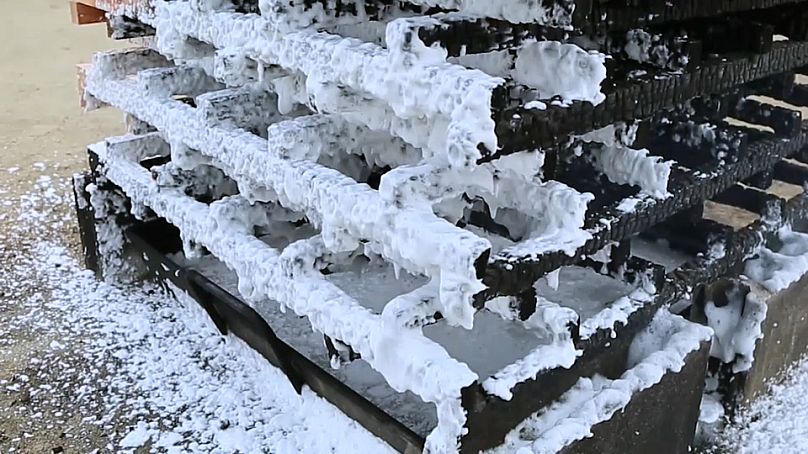 T
T